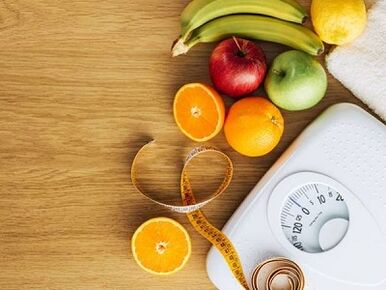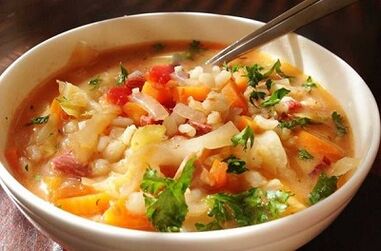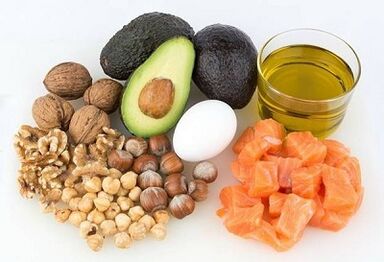
One of the most effective weight loss diets is a meat-free diet.Many experts, nutritionists and doctors have long established that weight loss can be achieved not only by reducing portion sizes, but also by eliminating products such as meat.After all, this is a huge source of protein and saturated fat, which are deposited in the body in the form of various lipids, including cholesterol.
Therefore, giving up meat can not only reduce weight, but also reduce the risk of cardiovascular disease.The risk of coronary heart disease, stroke and heart disease depends directly on the levels of total cholesterol and "bad" lipoproteins in the blood.The more we use them, the more and faster they will fall on our boats.After all, we are what we eat.
Advantages and Disadvantages of Meat.Why try to give up?
- Meat contains a lot of protein, which is the building material of our body.But if you give up meat, you can eat other protein-rich foods.These are dairy products (cottage, cottage cheese, milk), legumes, nuts and whole grains.They will fill the body with enough protein.
- Meat, especially red meat, is a source of iron, phosphorus, vitamins B12, A, E, and D.But plant products, especially oils, also contain large amounts of these substances.Since meat is not the only source of these vitamins and minerals, its role has been overstated.
- In the modern world, meat can be harmful if hormones and antibiotics are added to improve taste, quality and appearance.In addition, improperly cooked meat (fried, fatty) is "heavy" on the gastrointestinal tract and can lead to exacerbation of chronic pancreatitis and cholecystitis.It promotes the proliferation of putrefactive intestinal microbiota.Meat is also harmful to the cardiovascular system.
- Cooked meat is bad energy.This is an opinion that vegetarians and many people still cannot resist.
After weighing the pros and cons, we can only say that meat is not a necessity. Without meat, there will be a lack of protein, vitamins and other elements.It can definitely be substituted with other products, even healthier ones.But if you decide to lose weight and give up meat entirely, you'll want to do it gradually so that your body has time to adapt to the change in diet.Cutting out meat to lose weight doesn't mean cutting out the fat and protein it contains.But just reduce their quantity and replace them with the same thing, just with other lighter dishes.They are found in large amounts in dairy products, fish, eggs, legumes, nuts and vegetable oils.Gradually, all meat should be replaced with boiled meat, and then its content in the diet should be reduced.Eat more vegetables – broccoli, celery, carrots, squash, beets, zucchini, avocado.
Main types of diets available for weight loss

- According to Pevzner, Diet No. 5.This diet has therapeutic and preventive properties and is prescribed by doctors for digestive disorders.It is prescribed as a preventive measure in nursing homes.The essence is to eliminate foods rich in cholesterol, essential oils and fats, while also reducing salt intake.Add foods containing pectin and fiber to your diet.Food should be roasted or stewed, and drinking enough water is also important.Although this diet allows you to eat a little cooked meat (poultry, beef) and dairy products (milk, kefir up to 200 ml per day), why is Diet 5 not ideal for weight loss?In addition to normalizing gastrointestinal function and eliminating toxins from the body, it can also help you lose weight to a normal weight.Additionally, if you decide to give up meat entirely, it may become a transitional phase for you.
- The diet is free of meat and dairy.It is more stringent because it completely eliminates animal proteins and fats.Of course, by following such a diet, you will definitely lose excess weight, but planning and eating is not easy.It will be more difficult to stick to such a diet.Meat and dairy products should be phased out.You can keep fish in your diet.
Approximate menu
- breakfast.Buckwheat, rice, millet porridge, seasoned with olive oil, served with fresh vegetables and bread.Granola with dried fruit, nuts, honey, sesame seeds or flaxseeds.Tea or hot preserves and avocado sandwiches.
- dinner.Vegetable, mushroom, pea, bean soup.Cauliflower, spinach, zucchini, mashed potatoes.Grilled mackerel, cod, dorado with lemon.Vegetable salad, vinaigrette.It’s best to season with wheat germ oil (a great source of vitamin E), sesame oil, olive oil, and walnut oil.You can also make pasta from durum wheat.
- snack.Eat fresh fruits and berries, fresh or in the form of juice, juice drinks or casseroles.Nuts, dried fruits (70-100 g).You can grate apples, carrots and season them with butter or honey.
- dinner.Roasted or stewed vegetables, side dishes include boiled beans, lentils, and chickpeas.Potatoes with skin on, stewed cabbage.Fish can be made into cutlets, tomato casseroles and cauliflower.
The diet does not include meat and fish.This diet involves consuming dairy products as a protein food.For breakfast you can have an omelette with vegetables, cheese with berries, kefir.For lunch or dinner, add milk, yogurt to salad, hard-boiled eggs or egg casserole.Low-fat sour cream, cream and butter are allowed on sandwiches.
Basic rules for losing weight on a meat-free diet

- Every diet should be accompanied by a moderate amount of physical activity.Start with a morning or evening walk in the fresh air.
- Diet-system.Breaking the rules of the regime won't get you to the desired results, and every sandwich or missed workout will slowly incapacitate you.It is believed that following the regimen for a full 21 days will make it a habit.
- The diet should consist of three meals (don’t forget some snacks).
- When cooking, add as little salt and spices as possible.
- Every morning, drink a glass of warm water and add a teaspoon of honey.
- A meat-free diet involves cleansing and unloading the body, not hunger and exhaustion.The diet must be properly matched to avoid harm to the body.According to experts, this diet must include a minimum intake of fish and dairy products (kefir, yogurt, eggs, low-fat cottage cheese).
- Make sure your diet does not favor foods containing simple carbohydrates (breads, flour products).
- Eat porridge and bread for the first half of the day.For dinner it is better to prepare dishes rich in protein (beans, cheese, eggs).
- To improve intestinal motility and remove waste and toxins, eat fiber found in vegetables, fruits, dried fruits and nuts.
This week's menu
Monday and Wednesday:
- Breakfast: porridge, boiled eggs, fresh cucumbers, hot tea and bread.
- Lunch: Vegetable soup, mushroom lentils, roasted beet salad with olive oil.Dessert: cottage cheese with honey and dried cranberries, candied.
- Dinner: mashed potatoes with spinach, fish cakes, avocado.
- Snacks: walnuts, raspberries, blueberries, strawberries.
Tuesday and Thursday:
- Breakfast: kefir, whole wheat bread (100g)
- Lunch: fish soup, oil and vinegar sauce.Dessert: berry jelly.
- Dinner: Mushroom and pumpkin soup, lemon grilled fish, fresh vegetable salad.
- Snacks: apples, pears, peaches.
Friday and Sunday:
- Breakfast: oatmeal, nuts and honey, candied fruits.
- Lunch: Bean and herb soup, zucchini pancakes, boiled eggs, olives.Dessert: Cheesy casserole with raisins and apples.
- Dinner: fish stew (mackerel), green peas and cauliflower puree, green salad.
- Snacks: figs, dates, dried apricots.
Saturday:
- Breakfast: omelette with onions, tomatoes and cheese, fresh cucumber
- Lunch: Buckwheat with vegetables, cabbage, corn and egg salad with unsweetened yogurt.Fresh berry juice.
- Dinner: Boiled beans, mushroom stewed cabbage, green peppers, onions, tomato salad.
- Snacks: oranges, pineapples, grapefruits, persimmons






























